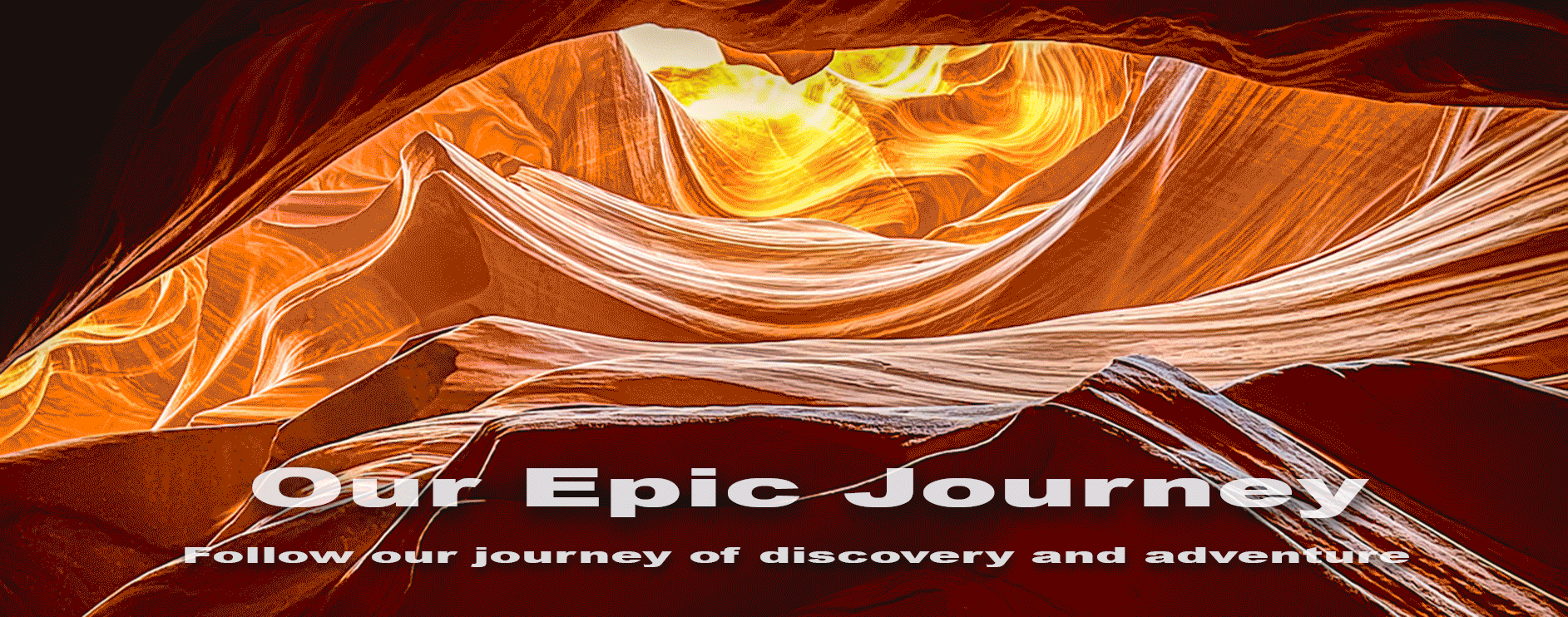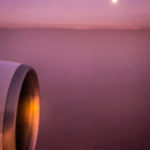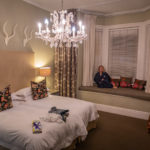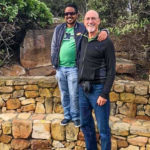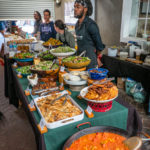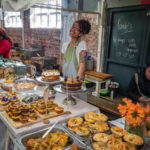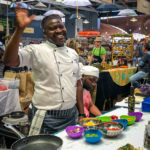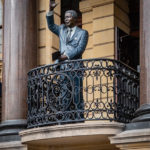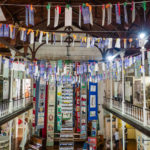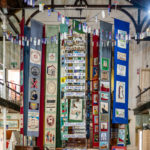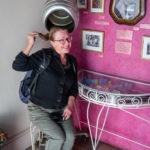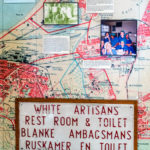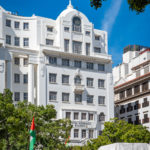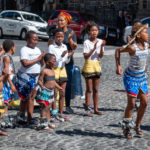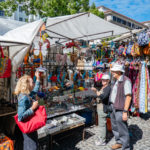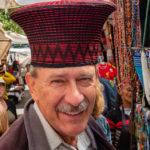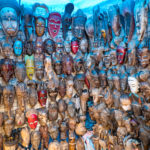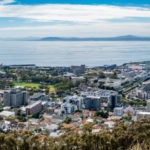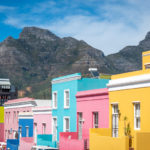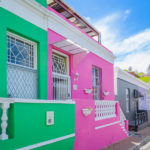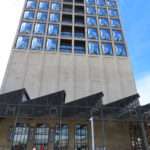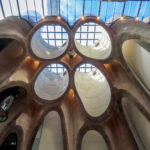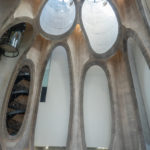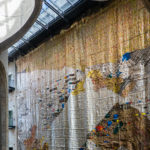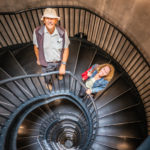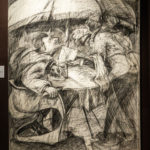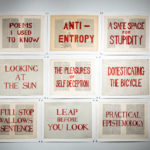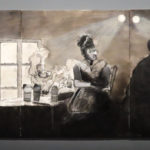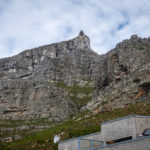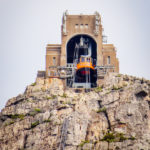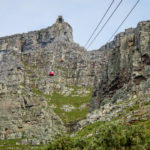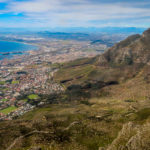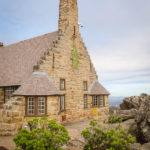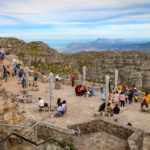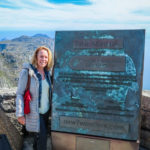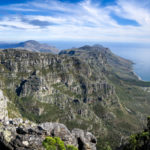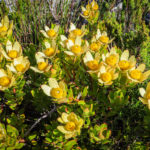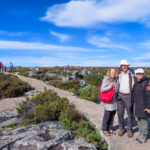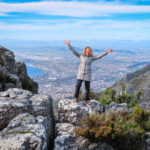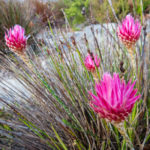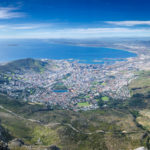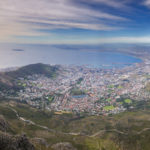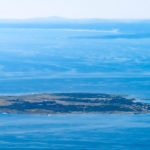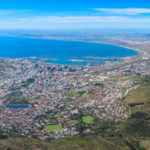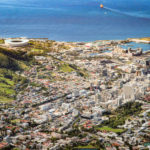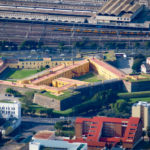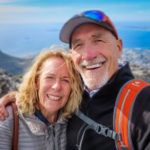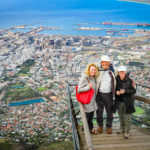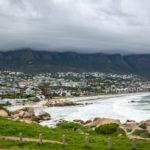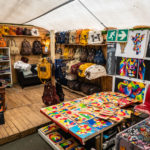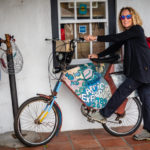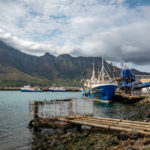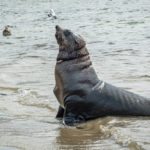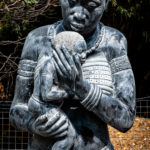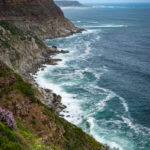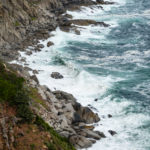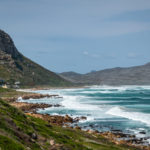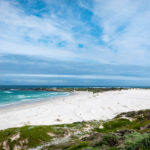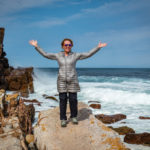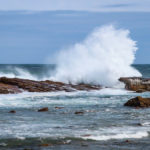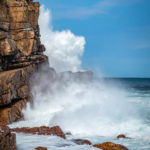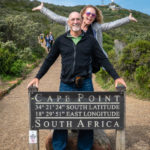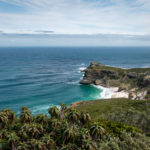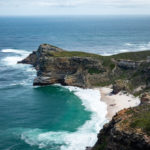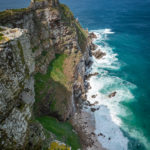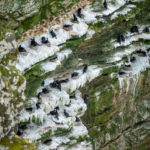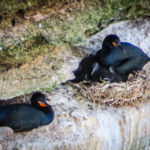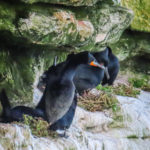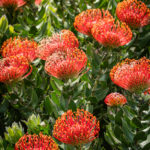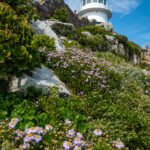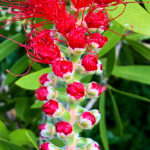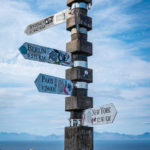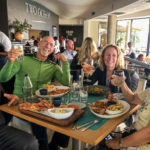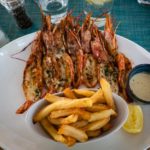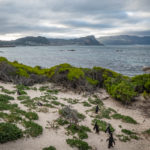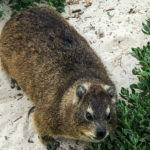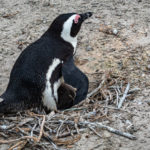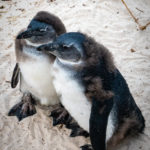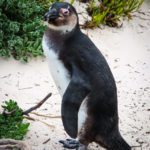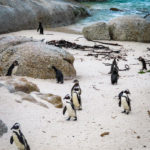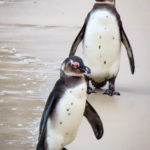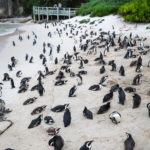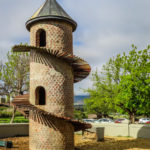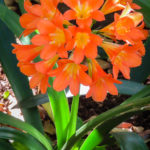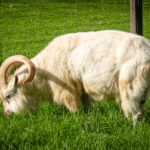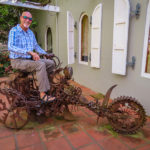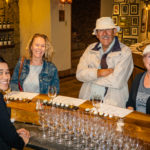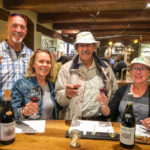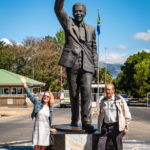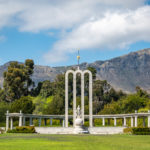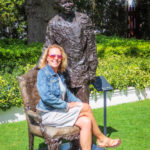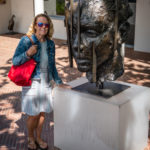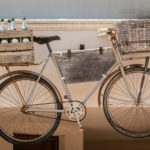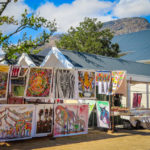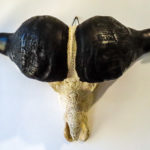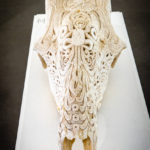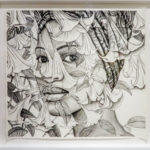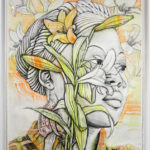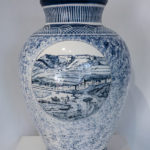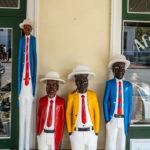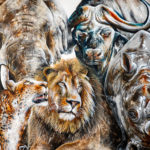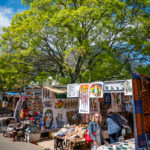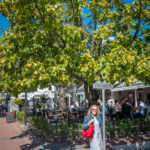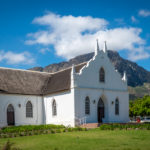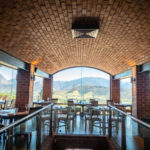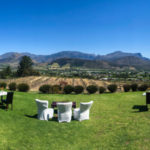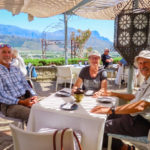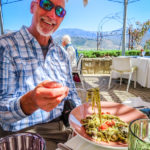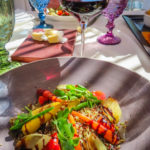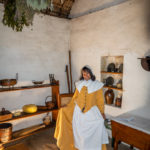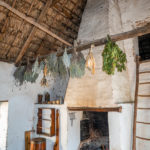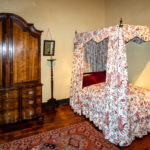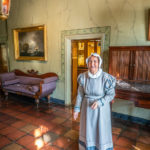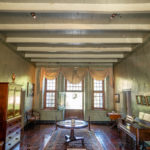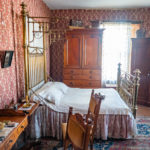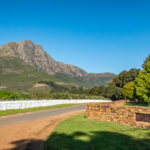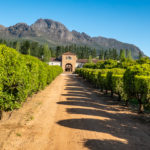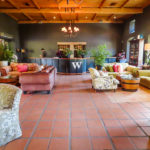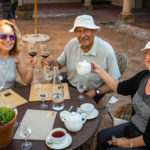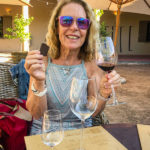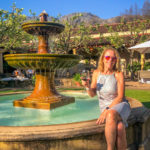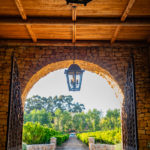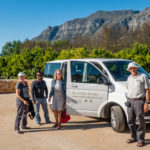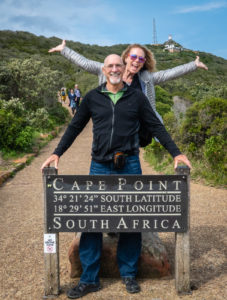 Cape Town and Table Mountain
Cape Town and Table Mountain
September 11, 2019, finally the day has arrived to depart for our trip to Africa. We spent one night in Seattle and flew out of Tacoma/Seattle Airport on Thursday, September 12th, arriving in Cape Town Friday, the 13th at 11 o’clock in the evening. We stayed with Pat and Harry Koehler for three nights at the Blackheath Lodge Boutique Hotel in Sea Point on Cape Town’s Atlantic Seaboard. The Lodge has a rich history dating back to the 1880s. Its Victorian design, spacious interiors, high ceilings and wooden floors are combined with eclectic touches of African style and charm. We had a beautiful spacious room with high ceilings and elegant decor. The next morning we met Pat and Harry at breakfast before heading out on our first day exploring Cape Town. Our guide Wasfie Hattas, picked us up in the van at 9am, our first stop was to the Old Biscuit Mill Market where Cape Town meets for culinary delights and fine local designs. We explored the Old Biscuit Mill and experienced some of South Africa’s most innovative and creative designers, artists, photographers and connoisseurs of fine taste and decor. We sampled some of the delicious food, even vegan delights, and enjoyed the colorful art and clothing stalls.
Then it was off to discover District Six, which is a former inner city residential area in Cape Town, near the city center and Table Mountain; where over 60,000 of its inhabitants were removed during the 1970s by the apartheid regime. The area was named in 1867 as the Sixth Municipal District of Cape Town and began to grow after the freeing of the enslaves in 1833. By the early 1900s it was already a lively community made up of former slaves, artisans, merchants and other immigrants, and was home to a tenth of the cities population. After WW ll, District Six was relatively cosmopolitan, with mostly colored residents, when the Government officials deemed District Six a slum, fit only for clearance, not rehabilitation. By 1982, more than 60,000 people had been relocated to the sandy, bleak Cape Flats township complex roughly 25 km away. The old houses were bulldozed. Since the fall of apartheid in 1994, the South African government has recognised the older claims of former residents to the area, and pledged to support rebuilding. We visited the District Six Museum which serves as a remembrance to the events of the apartheid era as well as the cultural and history of the area before the removals. Then we went to shop at the iconic inner-city market of Greenmarket Square, one of the best places to find African souvenirs and crafts in Cape Town. We had to rush off to hear the Noon Gun fire on top of Signal Hill, or Lion’s Rump. The Noon Gun has been a historic time signal in Cape Town since 1806. The original guns from 1794, are 18 Pounder Smooth Bore Muzzle Loading Guns, and still in use today. The ritual represents one of Cape Town’s oldest living traditions. They are the oldest guns in daily use in the world, and they fire every day except Sundays and public holidays. We made it to the flat-top mountain of Signal Hill in time to get a video of the gun being fired.
On the way down Signal Hill we walked around the Bo-Kaap, (“above the Cape” in Africaans) area with its distinctive pastel colored houses and cobble stoned streets. The area is traditionally a multicultural neighborhood, mostly Muslims, and is the oldest surviving residential neighborhood in Cape Town since 1763, when Jan de Waal built several small rental houses, which he leased to his slaves. After the emancipation in 1834 and the arrival of liberated slaves, the developer built numerous rows of narrow, deep rental houses. The brightly colored facades are attributed to an expression of freedom by the homeowners, as all the houses were painted white while on lease. Our next stop was to visit the Zeitz Museum of Contemporary Art Africa, located at the V&A Waterfront, established in 2017, it is the largest museum of contemporary African art in the world. The museum building was constructed from the conversion of the 57m (187ft) tall historic Grain Silo, originally built in 1921 and decommissioned in 2001. The interior of the building was carved out to create a number of galleries and a large central atrium with pillowed glass panels to allow natural light to enter. We spent time in most of the galleries marveling at the unique African artifacts, and loved the central atrium with the tall tapestry hanging from the ceiling.
It was getting late and we wanted to go up Table Mountain, the most iconic landmark of South Africa, while we had sunlight. Wasfie dropped us off at the Table Mountain Aerial Cableway. We took the cablecar (originally opened in October 4th, 1929), holds 65 passengers, and takes 4-5 minutes to get to the top. The new cable cars rotate 360 degrees during the ascent or descent, giving a panoramic view over the city. The main feature of Table Mountain, (260 million years old), is the level plateau approximately 2 miles from side to side, edged by impressive cliffs. We stopped for lunch in the beautiful stone building before heading out to hike the many trails on the summit. The highest point on Table Mountain is Maclear’s Beacon (3,563ft), marked by a cairn, and as we walked around the hiking trails, we had spectacular views of Lion’s Head, Signal Hill, Robben Island, Cape Town city center, Table Bay, Devil’s Peak, and on the Atlantic side the Twelve Apostles. We were so fortunate to have such a clear day to capture these views, often it is covered by clouds, the so-called “Tablecloth” of cloud in colder weather. Then it was time to head back down on the Cableway, and we took a taxi back to Blackheath Lodge after a fabulous first day in Cape Town. The highlight of the day was Table Mountain and it is clear to see why it is one of the New7Wonders of Nature. Click on thumbnail to view images
Day 2-Tour of the Cape Peninsula
Wasfie was ready at 9am to take us for our tour of the Cape Peninsula. Camps Bay Beach was our first stop where we got out to take photos of the beautiful scenery. Camps Bay is an affluent suburb of Cape Town, and Camps Bay Beach, a Blue Fag Beach since 2008, is the largest white sands beach in Camps Bay. Then we continued our drive along the coast to Hout Bay, (meaning “Wood Bay”), where we shopped at the famous Bay Harbour Market. It is the most vibrant market in Cape Town, located in an authentic fish factory in a working harbour. Everything available in the Market from arts and crafts to clothing and the most delicious food market! Pat and I splurged in the clothing section and bought t-shirts of Cape Town. As we left the Market we stopped to take photos of a huge sea lion wallowing on the beach near us. He was definitely in a state, barking loudly at us as we watched him. We decided not to take the boat trip to see the sea lions on a large rock “island” at the mouth of the Hout Bay peninsula, due to the windy conditions and the rough seas. So it was fun to be able to see this sea lion up close.
On our way to Cape of Good Hope, we stopped to see the many beautiful statues that were placed in the front yard for viewing and buying. Luckily they were all too big to buy! Arriving at Cape of Good Hope, an exposed rocky headland on the Atlantic coast of the Cape Peninsula, there were lots of tourists even on a typical blustery day. Cape of Good Hope is the most southwestern point of the African Continent, a little south of Cape Point. We spent time wandering on the rocky shore and taking lots of amazing photos, especially of the famous Cape of Good Hope sign with the four of us. We drove up the road to Cape Point, the windiest place in South Africa, where we hiked up to the Lighthouse and then ate lunch in the Cape Point Restaurant. The new Lighthouse was located to a lower level, because foggy conditions often prevail at the higher levels, making the old lighthouse invisible to shipping. On April 18th, 1911, the Portugueses liner Lusitania was wrecked just south of Cape Point on Bellows Rock, prompting the relocation of the lighthouse. Click on thumbnail to view images
Next stop was Boulders Beach where the Boulders African Penguin Colony is located. Boulders Beach is a sheltered beach made up of inlets between granite boulders, from which the name originated, in the Cape Peninsula. From just two breeding pairs in 1982, the penguin colony has grown to about 3,000 birds in recent years. We walked along the boardwalks taking us within a few feet of the birds. These African penguins are only found on the coastlines of Southern Africa, and are currently on the verge of extinction. It was such a special sight to see all of these penguins frolicking in the water so close to us. We also saw a Cape Dassie (Hyraxes) at Boulders Beach hanging out with the penguins. One of the most unbelievable facts about the Dassie is that they are the closest living related relatives to the African elephants. Another great day exploring the Cape Peninsula.
Day 3 Tour of the Cape Winelands
Our last day in Cape Town, we decided to take a trip inland to see the beautiful countryside and to taste some of the famous South African wines. South Africa’s winemaking history dates back to the 17th century, and we visited one of the oldest wineries in the Paarl region. Fairview Wine and Cheese Farm established in 1693, with Steven Vervey the first official owner. The goat tower was the first attraction we stopped at and watched the goats play in the fields. In the wine tasting room we tasted some wonderful reds and whites complimented with the cheeses from the farm. We bought some wine on our way out before heading to Franschhoek, (Africaans for “French Corner”). In 1688, French Huguenot refugees began populating the valley establishing farms, and this heritage is shown today by the Huguenot Monument located at the end of the town. Franschhoek is notable for having some of the top restaurants in the country, and has been described as the “food and wine capital” of South Africa. We wandered along the quaint streets of the village and stopped into several galleries before going for lunch at the Roca Restaurant on Dieu Donne Vineyards. Actually translated as “Rock on God Given Land”, and this became apparent on our first view of the iconic Franschhoek Valley from the upper deck of Roca Restaurant. We enjoyed a delicious lunch on the patio, mesmerized by the scenery.
We were reluctant to leave this picturesque setting but it was time to drive to Stellenbosch, the second oldest town in South Africa, founded in 1679. Stellenbosch University is one of South Africa’s leading universities. Pat and I wandered through the oak-shaded avenues exploring the cafes, boutiques and art galleries while the guys went to the Stellenbosch Village Museum. Where the history of Stellenbosch is portrayed in four different houses, representing the homes during the periods from the 1700s to the 1800s. Then we were off to visit our last winery, the Waterford Estate. The drive through the picturesque Blaauwklippen Valley, outside Stellenbosch set the tone for our arrival at Waterford Estate. The avenue to the Winery of the sweet-smelling citrus trees and rolling lawns, was so inviting as we entered the archways on our way to the courtyard, it felt like we were visiting someone’s home, there is nothing pretentious or ostentatious about the estate. We settled into a nice table in the courtyard near the fountain and began to taste the selection of wines and chocolate pairings. Finally it was time to depart, Wasfie drove us back to the Blackheath Lodge in Cape Town, where we said our final farewell and thanked him for being a wonderful tour guide for the last three days helping us experience South Africa to the fullest.
